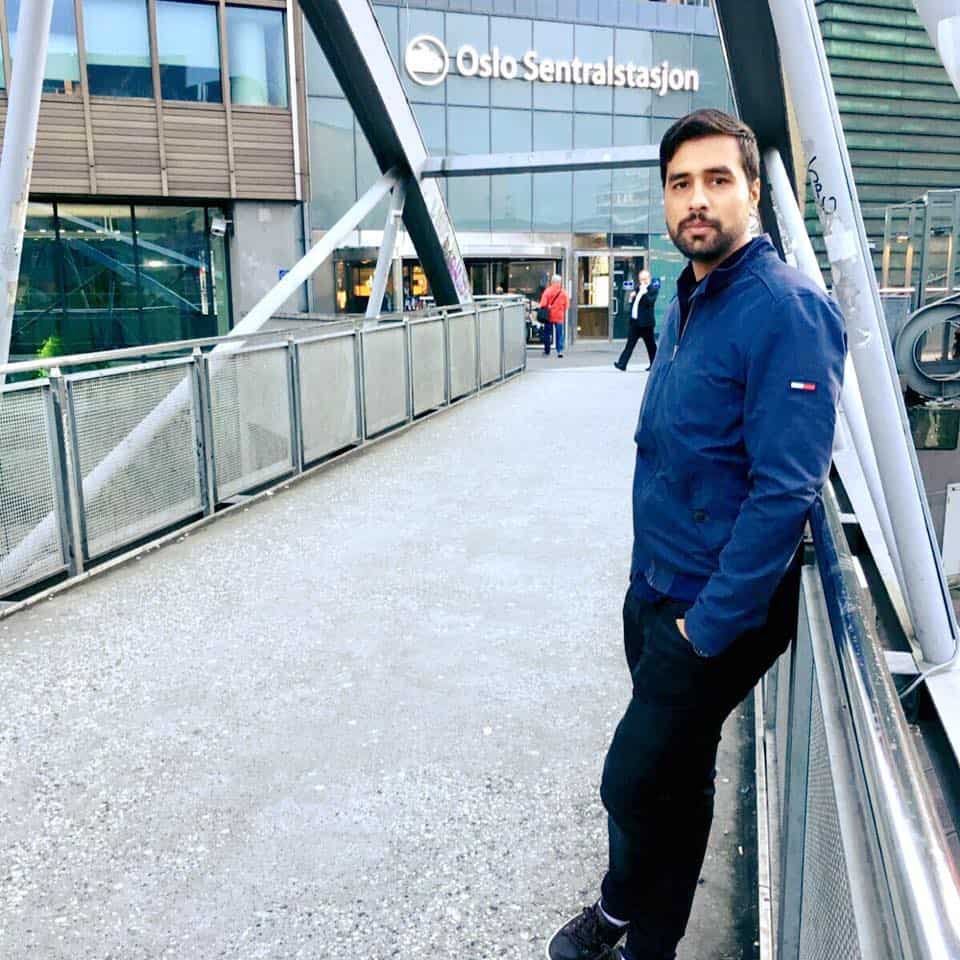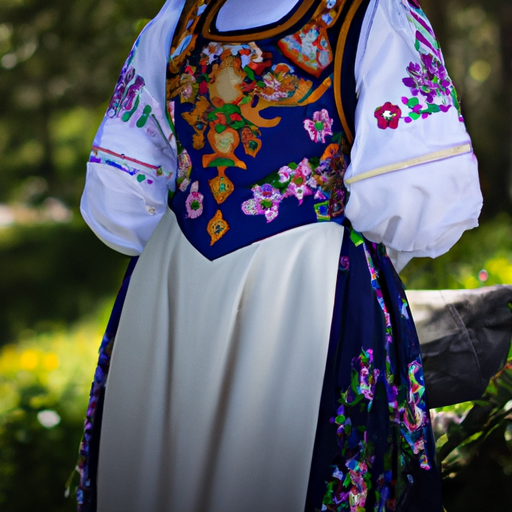If you are interested in exploring the cultural heritage of Norway, the Vestfold Bunad is one traditional garment you should definitely check out. The bunad is a traditional Norwegian costume that dates back to the 18th century, and the Vestfold bunad is one of the most popular styles around. This article aims to give you a comprehensive look into the history, patterns, styles, and colors of the Vestfold Bunad.
Introduction
The Vestfold Bunad is a traditional costume from the Vestfold region of Norway. It is a cherished part of Norwegian culture and is worn with pride by people of all ages. The bunad is a beautiful garment that is rich in history and tradition, and it is a popular choice for those attending festivals and celebrations throughout the country.
The Vestfold Bunad is made up of several different pieces, including a skirt, blouse, apron, and shawl. Each piece is carefully crafted by skilled artisans who take great pride in their work. The bunad is typically worn on special occasions, such as weddings, christenings, and other important events.
The history of the Vestfold Bunad dates back to the 19th century, when traditional Norwegian costumes began to gain popularity. The bunad was originally worn by women who worked on farms and in other rural areas, and it was designed to be both practical and beautiful. Over time, the bunad evolved into a symbol of Norwegian culture and identity, and it is now one of the most recognizable and beloved costumes in the country.
Today, the Vestfold Bunad is a treasured part of Norwegian culture, and it is worn with pride by people of all ages and backgrounds. Whether you are attending a festival, celebrating a special occasion, or simply want to show your love for Norway, the Vestfold Bunad is a beautiful and meaningful way to do so.
Vestfold Bunad History
The Vestfold Bunad has a long and interesting history that dates back to the 18th century. The bunad was originally worn by the rural people of Norway, who wanted to show their love and appreciation for their cultural heritage. The bunad was not just a piece of clothing, it was a symbol of their identity, their history, and their connection to the land.
The Vestfold Bunad was made from wool, linen, and silk, and was decorated with intricate embroidery and patterns. The colors used in the bunad were often inspired by the natural surroundings of the region, such as the blue of the sea or the green of the forests.
Over time, the Vestfold Bunad evolved, and various styles and patterns emerged. Some of the earliest Vestfold Bunads were plain and simple, while others were more elaborate and ornate. The bunad was not just worn on special occasions, but also on a daily basis, as a way of showing pride in their heritage.
During the 19th century, the Vestfold Bunad went through a period of decline, as people began to adopt more modern styles of clothing. However, the bunad was not forgotten, and it wasn’t until the 1940s that it was given new life. This was due to the efforts of various organizations, such as the Norwegian Folklore Association, who believed that the bunad was an important symbol of Norwegian culture.
Today, the Vestfold Bunad is still worn with pride by many people in Norway. It is a symbol of their heritage, their connection to the land, and their love for their country. The bunad is not just a piece of clothing, it is a living tradition that continues to be passed down from generation to generation.
Vestfold Bunad Patterns and Styles
The Vestfold Bunad is a traditional Norwegian folk costume that has been worn for centuries. It is a symbol of pride and heritage for the people of Vestfold, a county located in the southeastern part of Norway. The Bunad comes in a variety of styles and patterns, each representing a different region within the Vestfold area.
The most common style of the Vestfold Bunad is the women’s version, which includes a blouse with a full skirt. The blouse is typically made from wool and is decorated with intricate lacework and embroidery. The embroidery is often done by hand and can take months to complete. The skirt is also made from wool and is usually adorned with colorful patterns and designs, which vary depending on the region.
The apron worn over the skirt is also an important part of the Vestfold Bunad. It is usually made from silk or wool and is also decorated with colorful patterns and designs. The apron is tied around the waist with a ribbon and is an essential part of the overall look of the Bunad.
For men, the Vestfold Bunad includes a jacket, vest, and pants. The jacket and vest are typically made from sturdy fabrics like wool or cotton and are adorned with intricate embroidery and metal buttons or clasps. The pants are usually made from wool and are designed to be comfortable and durable.
The Vestfold Bunad is not only a beautiful piece of clothing, but it is also a symbol of the rich cultural heritage of Norway. It is often worn on special occasions such as weddings, christenings, and national holidays. The Bunad is a way for Norwegians to connect with their past and honor their ancestors who wore similar clothing centuries ago.
Overall, the Vestfold Bunad is a stunning example of traditional Norwegian clothing. Its intricate embroidery, colorful patterns, and sturdy fabrics make it a true work of art. Whether worn by men or women, the Bunad is a symbol of pride and heritage for the people of Vestfold and Norway as a whole.
Vestfold Bunad Colors
The Vestfold Bunad is a traditional Norwegian costume that is worn on special occasions, such as weddings, christenings, and national holidays. The colors used on the Vestfold Bunad are not just for aesthetic purposes, but they also hold significant meaning in Norwegian culture.
The color red, which is prominently featured on the Vestfold Bunad, is often associated with love and passion. In Norwegian culture, red is a symbol of warmth and affection, and it is believed to bring good luck to those who wear it. The red on the Vestfold Bunad is typically a deep, rich shade that represents the strong and enduring love that is shared between family members and loved ones.
Blue, another common color on the Vestfold Bunad, is symbolic of loyalty and trust. In Norway, blue is often associated with the sea and the sky, which are both integral parts of the country’s landscape. The blue on the Vestfold Bunad is typically a dark, navy shade that represents the steadfastness and loyalty that is valued in Norwegian culture.
Green is also a significant color on the Vestfold Bunad, as it represents growth and vitality. In Norway, green is often associated with nature and the outdoors, which are important aspects of Norwegian culture. The green on the Vestfold Bunad is typically a bright, vibrant shade that represents the energy and vitality of the Norwegian people.
Finally, yellow is a color that is often associated with happiness and joy. In Norway, yellow is a symbol of the sun, which is a source of warmth and light. The yellow on the Vestfold Bunad is typically a soft, buttery shade that represents the joy and happiness that is found in everyday life.
Overall, the colors used on the Vestfold Bunad are not just beautiful, but they also hold significant meaning in Norwegian culture. Each color represents a different aspect of Norwegian life, from love and loyalty to growth and happiness.
Conclusion
The Vestfold Bunad is an important symbol of Norwegian culture and heritage. It has a rich history and is a beautiful example of traditional Norwegian garments.
Whether you are interested in learning more about Norwegian culture or simply want to explore the beauty of traditional garments, the Vestfold Bunad is definitely worth checking out. With its intricate patterns and beautiful colors, it is sure to capture your interest and imagination.







